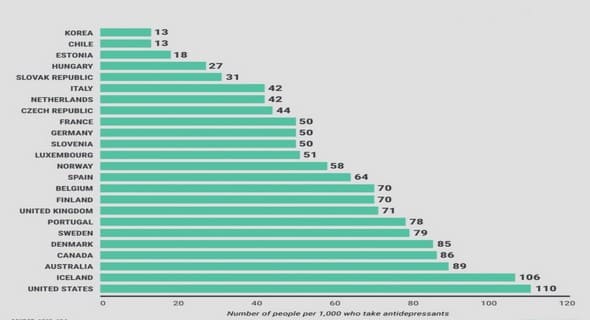(Downloads - 0)
For more info about our services contact : help@bestpfe.com
Table of contents
INTRODUCTION
Introduction – Bibliography
CHAPTER 1. DEFECTS IN CRYSTALLINE SILICON SOLAR CELLS
1.1 Physics of solar cells
1.1.1. Doping of silicon, the p-n junction
1.1.2. Light absorption, carrier photogeneration and collection
1.1.3. Charge carrier diffusion length, lifetime and mobility.
1.1.4. Forward I-V characteristics under illumination
1.1.5. Reverse I-V characteristics, junction hard breakdown voltage
1.2 Charge carrier transport properties, recombination and trapping
1.2.1 Charge carrier mobility, silicon resistivity
1.2.2 Carrier recombination and trapping
1.3 Si production: from silica to virtually pure Si
1.3.1 Carbothermic reduction
1.3.2 Purification by chemical routes, the Siemens process
1.3.3 Purification by metallurgical routes: focus on the PHOTOSIL process
1.4 Crystallization of Silicon
1.4.1 Czochralski growth
1.4.2 Multicrystalline ingot casting
1.4.3 Segregation of impurities
1.5 Main crystal defects – Impact on the PV performances
1.5.1 Grain boundaries and dislocations
1.5.2 Light elements: C, N and O
1.5.3 Metal impurities in Si
1.6 Solar cell fabrication
1.7 External Gettering effect
1.8 Bulk Hydrogenation effects
Chapter 1 – Bibliography
CHAPTER 2. A COMPARATIVE REVIEW OF CU AND TI PROPERTIES IN P-TYPE SI
2.1 Solubility and diffusivity
2.1.1 Solubility
2.1.2 Diffusivity
2.1.3 Precipitation mechanisms
2.2 Effect on the carrier lifetime
2.1.1 Interstitial Ti
2.1.2 Interstitial Cu
2.1.3 Copper pairs
2.1.4 Copper precipitates
2.1.5 Interactions with hydrogen
2.3 Effect on the PV performances
2.4 Cu-related LID
Conclusion
Chapter 2 – Bibliography
CHAPTER 3. STUDIED INGOTS – CHARACTERIZATION TECHNIQUES
3.1 Description of the studied ingots
3.1.1 Czochralski ingots
3.1.2 Multicrystalline Si ingots
3.2 Techniques for the evaluation of the compositional properties
3.2.1 Fourier-transform infrared spectroscopy (FTIR)
3.2.2 ICPMS, GDMS, SIMS
3.2.3 DLTS
3.3 Techniques for evaluating the electrical properties
3.3.1 Four-point probe technique for resistivity measurements
3.3.2 Carrier lifetime measurement techniques (μW-PCD and QssPC)
3.4 Techniques for the characterizations of the photovoltaic properties of the solar cells
3.4.1 I-V characteristics
3.4.2 LBIC analyses: determination of the minority carrier diffusion length
3.4.3 Electroluminescence
3.4.4 Aging tests
Chapter 3 – Bibliography
CHAPTER 4. INFLUENCES OF INTENTIONAL CU AND TI CONTAMINATIONS ON THE PROPERTIES OF CZ-SI WAFERS AND SOLAR CELLS
4.1 Compositional properties of the studied wafers
4.2 Resistivity
4.3 Effect of the contaminations on the effective carrier lifetime – Influence of the P-dif step
4.4 Effect of the Si hydrogenation on the electron diffusion length
4.5 Illuminated forward I-V characteristics
4.6 Dark reverse J-V characteristics
4.7 Evolution of the photovoltaic performances under illumination
Conclusion
Chapter 4 – Bibliography
CHAPTER 5. INFLUENCES OF INTENTIONAL CU AND TI CONTAMINATIONS ON THE PROPERTIES OF MC-SI WAFERS AND SOLAR CELLS
5.1 Compositional properties of the studied wafers
5.2 Resistivity
5.3 Effect of the contaminations on the effective carrier lifetime – Influence of the P-dif step
5.4 Effect of the Si hydrogenation on the electron diffusion length
5.5 Illuminated forward I-V characteristics
5.6 Dark reverse J-V characteristics
5.7 Evolution of the photovoltaic performances under illumination
Conclusion
Chapter 5 – Bibliography
CHAPTER 6. INFLUENCE OF PHOSPHORUS-RICH LAYERS DURING RAPID ANNEALING ON CARRIER RECOMBINATION AND TRAPPING IN COPPER CONTAMINATED MULTICRYSTALLINE SILICON
6.1 Experimental details
6.2 Influences of phosphorus-rich layer during rapid annealing step on carrier recombination in mc-Cu
6.3 Influences of phosphorus-rich layer during RTP on carrier trapping in mc-Cu
6.4 Influences of phosphorus-rich layer during rapid annealing step on the stability of carrier lifetime under illumination in mc-Cu
6.5 On the role of Si self-interstitials on the limitation of the metal precipitates dissolution
Conclusion
Chapter 6 – Bibliography
SUMMARY AND OUTLOOK
LIST OF PUBLICATIONS
RÉSUMÉ ÉTENDU



